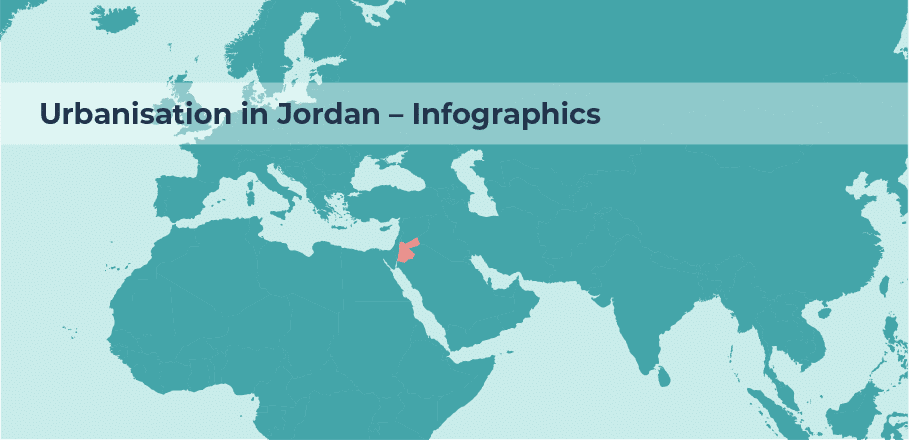Infographics: Urbanisation and Urban Development in Jordan
URBANET’s latest country series focuses on Jordan, and as always, we start the series with a collection of infographics! Learn more about urban development in a country where urbanisation has been a powerful factor for more than 30 years.
Urban and Rural Population
Jordan’s rural population has remained at roughly the same low level for the past 70 years and has seen a slight but steady decline from the mid 2000s onwards, which is projected to continue. The country’s urban population outnumbered its rural one for the first time in 1960 and has been characterised by an extremely steep increase ever since; this is projected to continue throughout the upcoming decades. For the year 2021, Jordan’s urban population is estimated to be ten times the rural one.
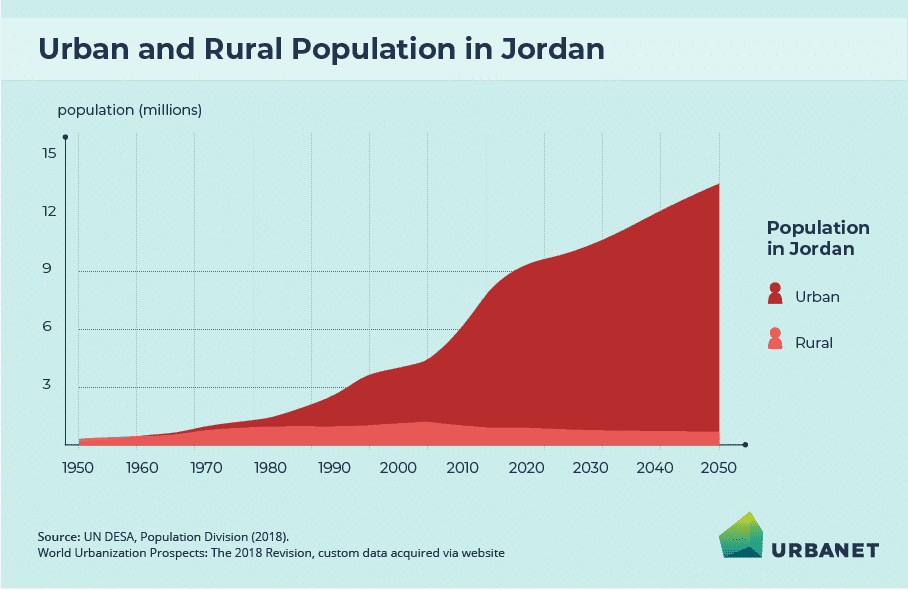
Urbanisation in Jordan – Urban and Rural Population | Jordan Infographics © GIZ
Size of Settlements
Being a small country, Jordan has only six large cities. Among them, there are two cities with a population between 300,000 and 500,000 and three cities with a population of up to a million. With the capital Amman being the only city exceeding 1 million, its 2,065,000 inhabitants make it Jordan’s largest urban settlement by far.
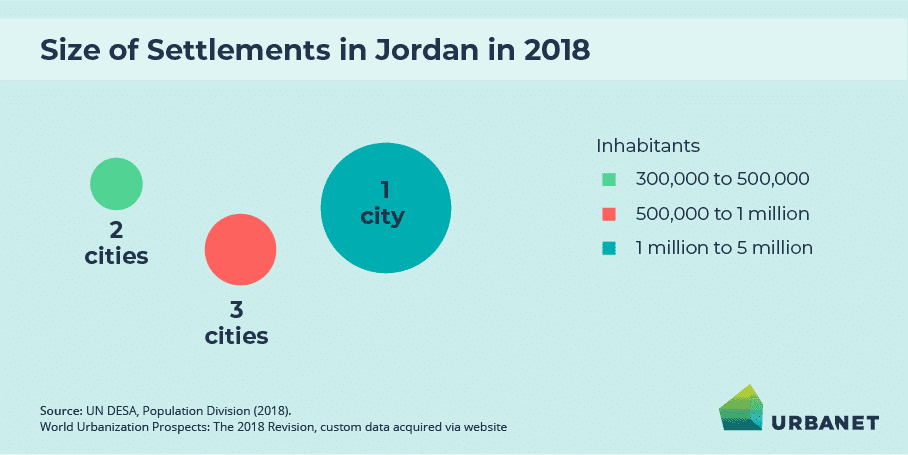
Urbanisation in Jordan – Size of Settlements | Jordan Infographics © GIZ
The 6 Largest Urban Agglomerations in Jordan
Taking a look at Jordan’s six largest cities, this graphic shows that all of them are projected to grow in population up to 2030. Amman will remain the largest city with a population estimated to hit 2.4 million by 2030. A particular feature of Jordan’s urban agglomerations is their distribution – all of them are located in the north-western tip of the country.
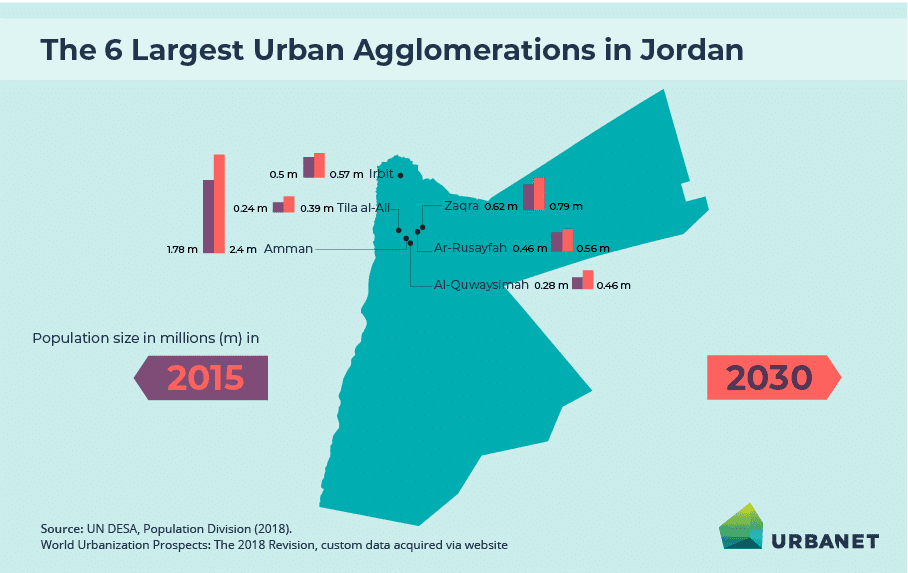
Largest Cities in Jordan | Jordan Infographics © GIZ
Urbanisation in Jordan – Key Figures
Jordan’s cities are home to 91.6 per cent of the country’s overall population, but only take up a mere 3.8 per cent of the country’s surface. Amman used to host half of Jordan’s entire population in 1950 – by 2021, this amount has decreased to a quarter. Jordan hosts a large refugee population from the country’s conflict-ridden neighbouring states. 83 per cent of them live in urban areas. Air pollution is a pressing issue in Jordan’s cities, and it is estimated that up to 90 per cent of it is caused by road traffic. The City of Amman has pledged to reduce its greenhouse gas emissions by 40 per cent, compared to its 2014 levels.
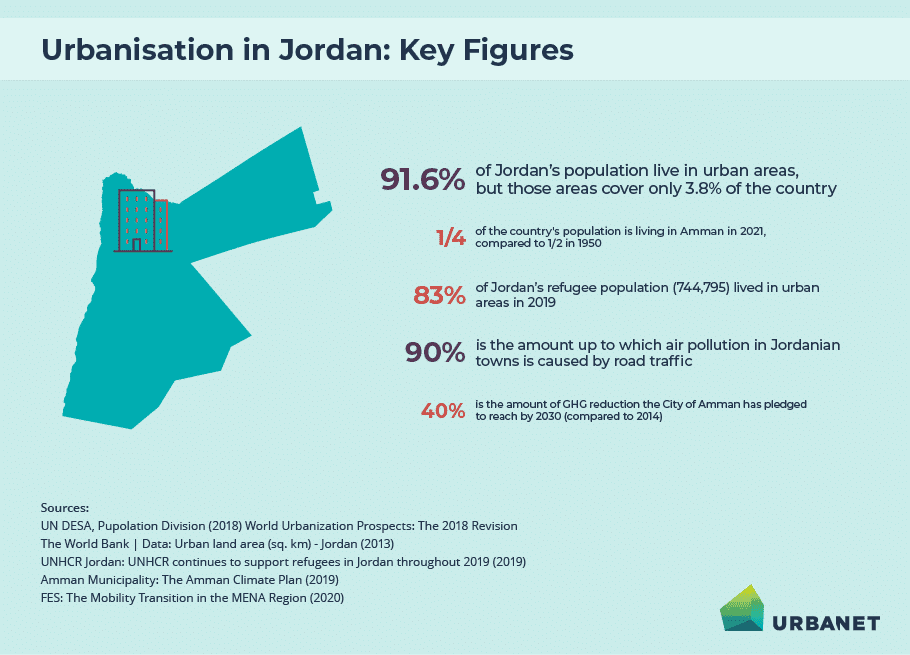
Urbanisation in Jordan – Key Figures | Jordan Infographics © GIZ
